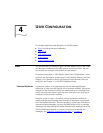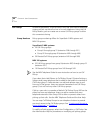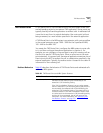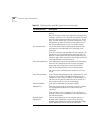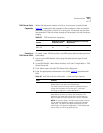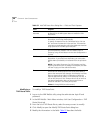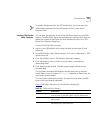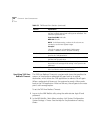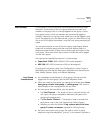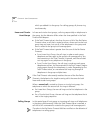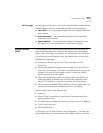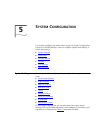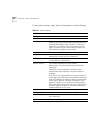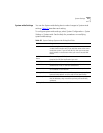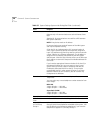
Hunt Groups 271
Hunt Groups A hunt group is a set of users that can be accessed by dialing a single
extension. A call routed to the hunt group extension can reach any
member of the group who is currently logged into the group. A static
hunt group is one in which all members are permanently logged in
(locked). A dynamic hunt group is one where users can be logged in and
out of the group by you, the administrator, or you can allow them to log
into or out of the group themselves, using the hunt group password you
create.
You can associate one or more of the hunt group login/logout feature
codes with a particular group and then map that feature code to a
telephone access button to allow users to easily login and logout of the
hunt group. The access button light remains lit while the user is logged
into the hunt group.
Hunt groups are specified by extension, in these ranges:
■ SuperStack 3 NBX: 4000–4099 (All 100 can be assigned.)
■ NBX 100: 450–499 (A maximum of 48 can be assigned.)
To configure hunt groups, select User Configuration > Hunt Groups in
NBX NetSet and then see the Help topics associated with these buttons:
Add, Modify, Remove, Status, and Feature Mappings.
Hunt Group
Considerations
■ For a telephone to participate in a hunt group, the user must be
logged into the hunt group. See the NBX Telephone Guide.
■ When you create a hunt group, you specify one of three types: linear
hunt group, circular hunt group, or calling group. Your choice is
based largely on the ringing pattern that you want.
■ For each group that you define, you also specify:
■ The Total Timeout — The length of time in seconds that the call
will ring on the group’s telephones before the call goes to the
group’s call coverage point.
■ The Per-Device Timeout — The length of time in seconds that
each phone rings in the cycle. (Ignored for Calling Groups.)
■ Whether you want the system to log a phone out of the hunt
group if it does not answer. (Ignored for Calling Groups.)
■ For linear and circular hunt groups, the order in which a group
telephone rings (the telephone’s “priority”) is the same as the order in



